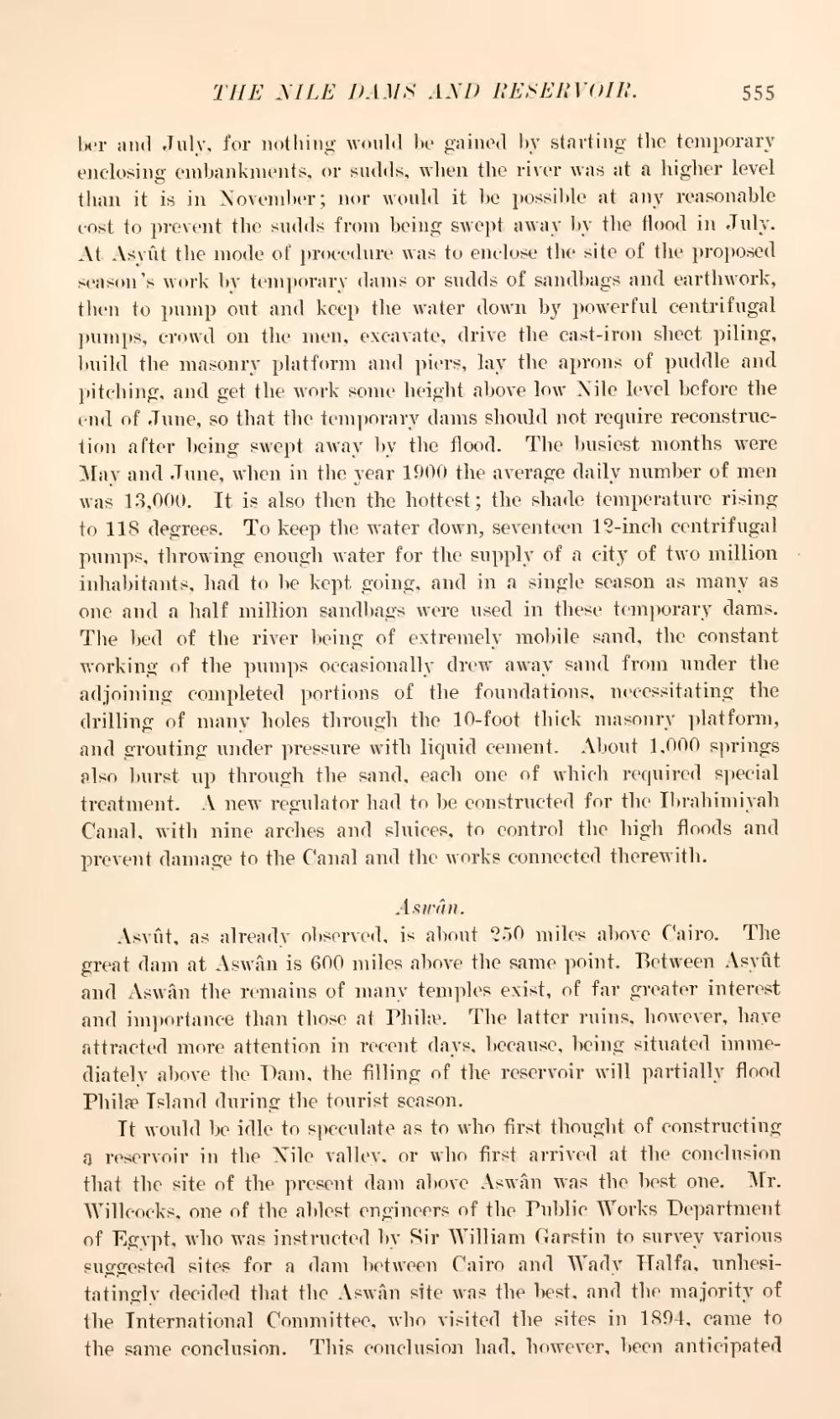ber and July, for nothing would be gained by starting the temporary enclosing embankments, or sudds, when the river was at a higher level than it is in November; nor would it be possible at any reasonable cost to prevent the sudds from being swept away by the flood in July. At Asyfit the mode of procedure was to enclose the site of the proposed season's work by temporary dams or sudds of sandbags and earthwork, then to pump out and keep the water down by powerful centrifugal pumps, crowd on the men, excavate, drive the cast-iron sheet piling, build the masonry platform and piers, lay the aprons of puddle and pitching, and get the work some height above low Nile level before the end of June, so that the temporary dams should not require reconstruction after being swept away by the flood. The busiest months were May and June, when in the year 1900 the average daily number of men was 13,000. It is also then the hottest; the shade temperature rising to 118 degrees. To keep the water down, seventeen 12-inch centrifugal pumps, throwing enough water for the supply of a city of two million inhabitants, had to be kept going, and in a single season as many as one and a half million sandbags were used in these temporary dams. The bed of the river being of extremely mobile sand, the constant working of the pumps occasionally drew away sand from under the adjoining completed portions of the foundations, necessitating the drilling of many holes through the 10-foot thick masonry platform, and grouting under pressure with liquid cement. About 1.000 springs also burst up through the sand, each one of which required special treatment. A new regulator had to be constructed for the Ibrahimiyah Canal, with nine arches and sluices, to control the high floods and prevent damage to the Canal and the works connected therewith.
Aswân.
Asvut, as already observed, is about 250 miles above Cairo. The great dam at Aswân is 600 miles above the same point. Between Asyfit and Aswan the remains of many temples exist, of far greater interest and importance than those at Philæ. The latter ruins, however, have attracted more attention in recent days, because, being situated immediately above the Dam, the filling of the reservoir will partially flood Philæ Island during the tourist season.
It would be idle to speculate as to who first thought of constructing a reservoir in the Xile valley, or who first arrived at the conclusion that the site of the present dam above Aswân was the best one. Mr. Willcocks, one of the ablest engineers of the Public Works Department of Egypt, who was instructed by Sir William Garstin to survey various suggested sites for a dam between Cairo and Wady Haifa, unhesitatingly decided that the Aswan site was the best, and the majority of the International Committee, who visited the sites in 1894, came to the same conclusion. This conclusion had, however, been anticipated
